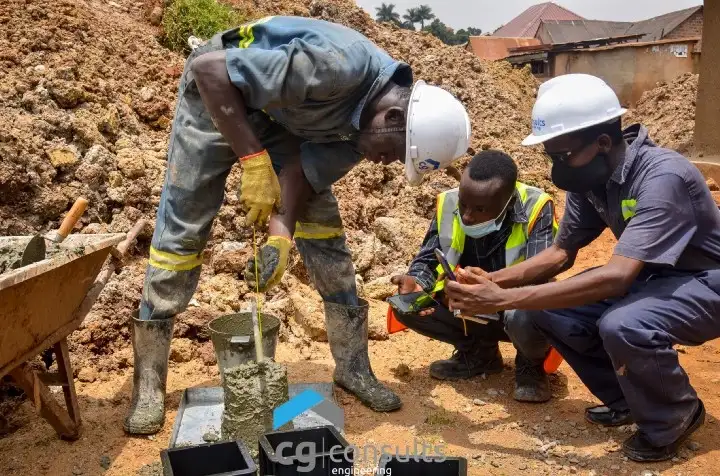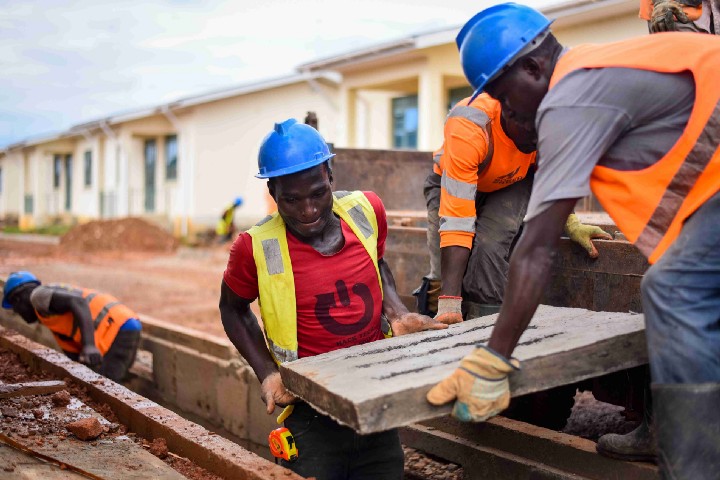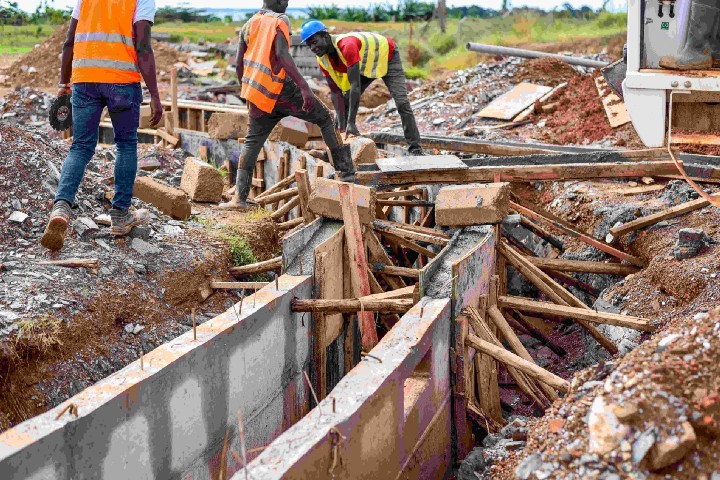Seismicity of Uganda
Uganda is situated between seismically active branches of the East African Rift System, The Western Rift (stretching from Aswa Fault Zone in the North to Lake Tanganyika in the South), and the Eastern Rift (stretching from Lake Turkana in the North to Lake Eyasi in the South) according to the Uganda Geological Surveys and Mines Department. To give perspective to the seismicity of Uganda, it should be noted that although the seismic trends in East Africa generally follow the rifts, the Western Rift shows more seismic activity than the Eastern Rift. According to the Uganda National Policy for Disaster Preparedness and Management available seismic information indicates that parts of Western and Central Uganda are prone to seismic activity. Therefore, most parts of the country are exposed to seismic hazards of varying degrees.
Earthquakes in Uganda
Damaging earthquakes have occurred in Uganda and they include the Masaka earthquake of 18th March 1945 with a surface wave magnitude of 6.0 in which 5 people were killed, the Tooro Earthquake of 20th March 1966 with a surface wave magnitude of 6.6 in which 160 people were killed, the Kisomoro earthquake of 5 February 1994 with a surface wave magnitude of 6.0 in which 8 people were killed. According to the United States Geological Survey, the most recently felt earthquake event was the earthquake of 4th March 2023 with a magnitude of 4.6 which occurred about 10km from Bundibugyo. With the population growing at an alarming rate, infrastructure has expanded with industrialization and urbanization, more so in Kampala City. It is generally assumed that an earthquake cannot be predicted (although it can be expected) or simulated (although we can approximate it), and that its destructive effects cannot be prevented (although they can be minimized or, at worst, optimized). Earthquakes, therefore, can create disasters of enormous magnitude when they hit such urban areas, schools or hospitals resulting into great physical and economic losses.
Seismic Code of Uganda
The seismic code of Uganda, US 319: 2003 was issued by the Uganda National Bureau of Standards in 2003. Three seismic zones were defined. Therefore, most parts of the country are exposed to seismic hazards of varying degrees. Other countries in the East African Rift System have seismic codes too.
The Kenyan seismic code was issued in 1973 by the Kenyan Ministry of Works and uses the Modified Mercalli intensity (MMI) scale to map the seismic hazard of the country (MWK, 1973). The country was divided into four seismic zones: Zone V, VI, VII and VIII–IX. The building design code of Ethiopia was first introduced in 1978. Its seismic provisions have been revised twice since then. The first revision took place in 1983. The current version, the Ethiopian Building Code Standard EBCS 8: 1995, provides a seismic hazard map based on a 100-year return period.
The Uganda seismic code is a set of guidelines and regulations designed to ensure the safety of buildings and structures in the country in the event of an earthquake. The code is based on international standards and guidelines, as well as on local knowledge and experience. The Uganda seismic code is a critical tool for design that ensures the safety of buildings and their occupants in the event of an earthquake. It is an important part of the country’s overall disaster risk reduction efforts. By following the code, designers and builders can create structures that are able to withstand the effects of earthquakes and minimize the risk of damage and loss of life. Despite its noble intentions, the code has several loopholes that need to be addressed in order to ensure maximum protection for buildings and their occupants.
Criticism of the Uganda Seismic Code
Firstly, the code is only applicable to new buildings and structures, leaving existing ones unguarded against earthquakes. This means that older buildings, which are more vulnerable to seismic activity, are not required to meet the code’s standards. This could be a challenge in a country where many of the iconic buildings were constructed before the advent of modern seismic design considerations. As a result, buildings that were constructed before the implementation of the code, or that were not constructed to the required standards, may not be safe in the event of an earthquake.
Secondly, the code does not provide clear guidelines on how to retrofit existing buildings to meet the seismic requirements. This has led to many building owners ignoring the code and continuing to use their structures as they were before without retrofitting to include modern seismic design techniques and detailing requirements.
In addition, the code does not provide clear guidelines on how to conduct seismic assessments of buildings. This has led to the use of outdated assessment methods that do not accurately reflect the seismic risks of a building. As a result, many buildings that are deemed safe by these methods may collapse during earthquakes.
Another loophole in the Uganda Seismic Code is the lack of trained personnel to enforce it. The code requires that all building designs be reviewed by a qualified engineer, but there is a shortage of such professionals in the country. This has led to the approval of designs that do not meet the seismic requirements, which can lead to the collapse of buildings during earthquakes.
One of the other loopholes in the Uganda seismic code is the lack of enforcement. While the code sets out clear guidelines for the construction of buildings in areas at risk of earthquakes, there is little enforcement of these guidelines by the relevant authorities. As a result, many buildings in Uganda are not constructed to the required standards, leaving them vulnerable to damage or collapse in the event of an earthquake.
There is lack of awareness of the seismic code among builders and developers. Many builders and developers are unaware of the specific requirements of the code or are not aware of the importance of adhering to these guidelines. As a result, they may not include seismic design considerations in their building plans, leading to structures that are not adequately prepared for earthquakes. In addition to these issues, the Uganda seismic code also suffers from a lack of clarity and consistency. The code is made up of a complex set of regulations and guidelines, which can be difficult for builders and other stakeholders to understand and interpret. This can lead to confusion and misunderstandings, which can result in buildings being constructed in ways that are not compliant with the code.
One of the major reasons for these loopholes is the lack of funding for seismic research and building inspections. There are insufficient funds for the implementation and enforcement of its provisions. This has led to a lack of resources for training personnel, conducting assessments, and retrofitting buildings.
How can these loopholes be addressed?
To address these loopholes, the Uganda seismic code needs to be strengthened through increased enforcement, awareness-raising campaigns, and regular inspections of existing buildings. This could involve the development of a national database of buildings and their compliance with the code, regular training programs for builders and developers, and the creation of a dedicated team of inspectors to carry out regular checks on buildings. Furthermore, there should be provision of more funding to seismic research in the country so as to aid research and development in the area.
In addition, the government could consider offering incentives to builders and developers who construct buildings to the required standards, such as reduced fees or faster approval processes. This could encourage compliance with the code and help to reduce the number of buildings that are vulnerable to damage or collapse in the event of an earthquake.
Furthermore, stricter enforcement measures and penalties for non-compliance should be developed. Clear guidelines on how to retrofit existing buildings and conduct seismic assessments.
Finally, the Uganda seismic code should be reviewed and revised to make it clearer and more consistent. This could involve simplifying the language and structure of the code, as well as providing more detailed guidance and examples for builders to follow.
Conclusion
Overall, the Uganda seismic code is an important tool for ensuring the safety of buildings and their occupants in the event of an earthquake. However, there are several loopholes in the code that need to be addressed in order to maximize its effectiveness. By strengthening the code through increased enforcement, awareness-raising, reviewing, revision and regular inspections, the government can help to ensure that buildings in Uganda are adequately prepared for earthquakes and protect their occupants from harm.



